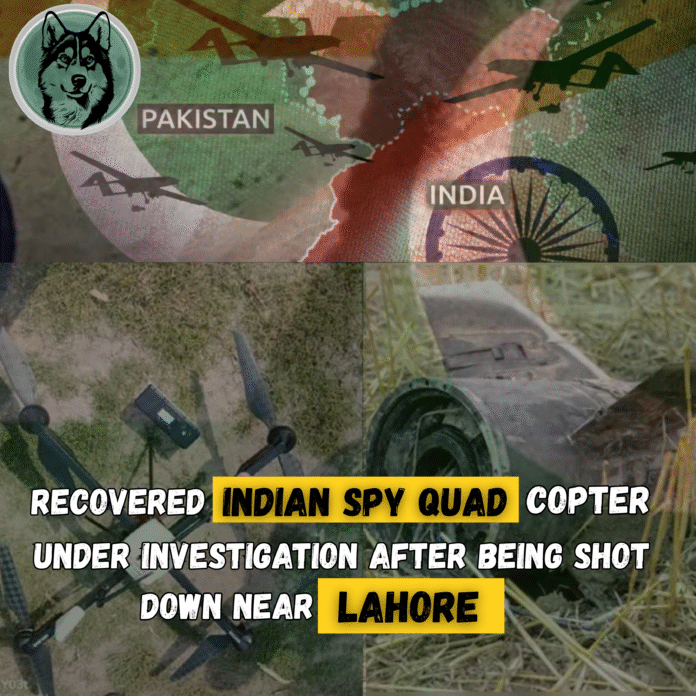Recovered device suspected of espionage as Pakistan launches full-scale investigation following recent cross-border hostilities.
Drone Downed Near Sensitive Area
In a significant security development, Pakistani forces on Thursday intercepted and shot down an Indian drone flying within Lahore’s airspace, near the eastern border. Security personnel immediately secured the site, and the unmanned aerial vehicle (UAV) was recovered fully intact. According to initial reports, the drone was not carrying explosives, leading officials to believe it was being used for surveillance purposes.
The device was quickly handed over to intelligence agencies, which are now analyzing its technical components, flight data, and possible command-and-control links. Officials say the drone appeared to be operating autonomously but may have been guided via satellite or remote systems.
Investigations Underway
A joint team comprising the Pakistan Air Force (PAF), military intelligence, and electronic warfare specialists has been tasked with investigating the UAV’s route and objective. The probe aims to determine whether this was an isolated act or part of a larger pattern of cross-border surveillance.
“Initial findings suggest high-resolution cameras and encrypted communication modules on board, pointing toward a reconnaissance mission,” a senior intelligence source told media on condition of anonymity.
The Foreign Office is reportedly preparing to summon India’s diplomatic envoy to lodge a formal protest, while officials weigh raising the issue at relevant international forums if a pattern of intrusion is established.
Background: Rising Regional Tensions
This incident follows a period of heightened tensions between Pakistan and India. In April 2025, an attack on Indian tourists in Indian Illegally Occupied Jammu and Kashmir (IIOJK) led to allegations from New Delhi that Pakistan-based elements were behind the violence—an accusation Islamabad firmly rejected.
India responded with limited cross-border airstrikes, prompting a swift and forceful reply from Pakistan under Operation Bunyan-um-Marsoos. The retaliatory operation targeted Indian airbases and radar installations, and Pakistani jets reportedly shot down six Indian fighter aircraft, including three French-built Rafales. Several Indian UAVs were also intercepted during the brief conflict.
Ceasefire and Diplomatic Fallout
The standoff ended after 87 hours, following back-channel negotiations and a ceasefire brokered by the United States. While India has denied that former U.S. President Donald Trump played a decisive role in the truce, Pakistan has publicly acknowledged his intervention and even nominated him for the 2026 Nobel Peace Prize for helping de-escalate what could have turned into a wider war.
Despite the ceasefire, minor ceasefire violations and diplomatic barbs have continued to fuel tension between the two countries. This latest drone episode threatens to unravel the fragile calm that had been restored in the region.
National Security on High Alert
Security analysts warn that UAVs—though small and unarmed—pose significant risks, particularly if they are used to gather intelligence on military or critical civilian infrastructure. The proximity of this drone to sensitive areas in Lahore has alarmed national security institutions, who are now reviewing surveillance protocols and airspace defense systems.
“The skies are now the new frontier for espionage, and drone warfare is no longer limited to armed conflict zones,” a defense analyst commented, stressing the importance of investing in anti-drone technology and early warning systems.
Public Urged to Stay Calm, Vigilant
Authorities have appealed to the public to remain calm and avoid spreading unverified information. Citizens living near border areas have been advised to report any unusual flying objects or noises to local law enforcement.
A government spokesperson confirmed that the situation is under control and that further details will be shared after the completion of the investigation.























